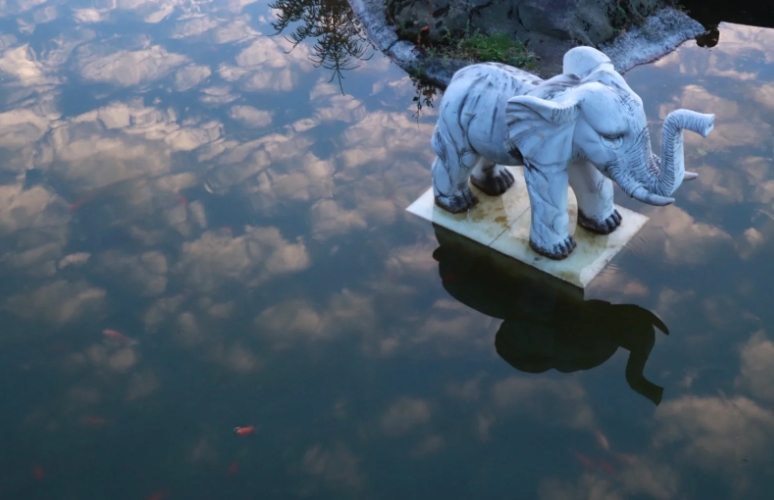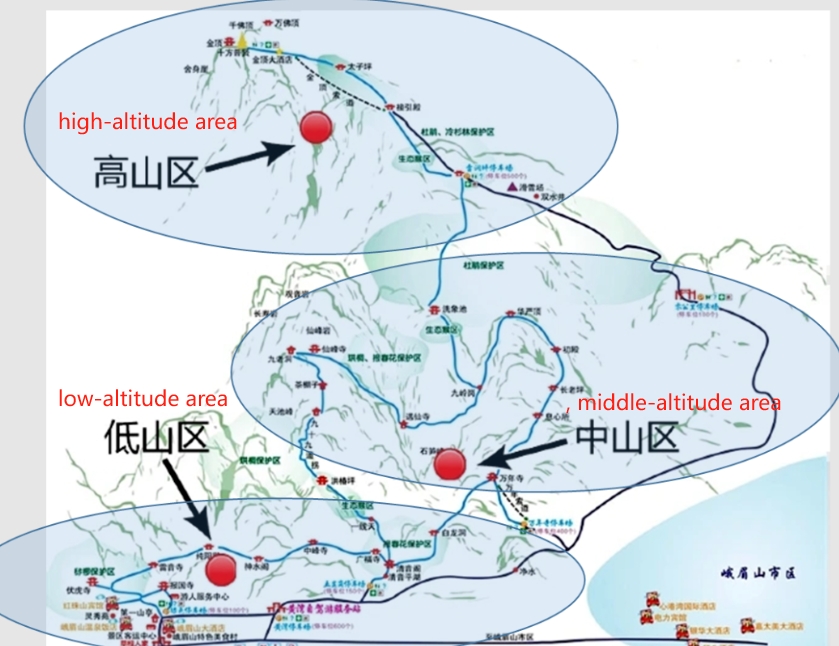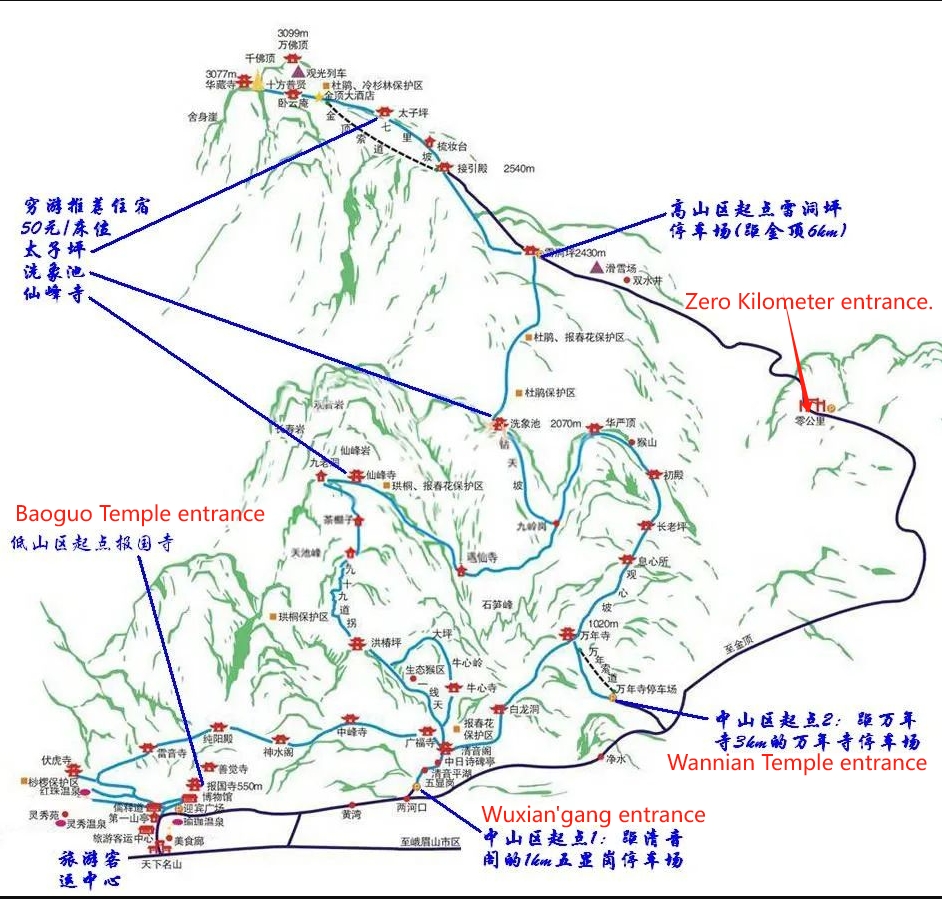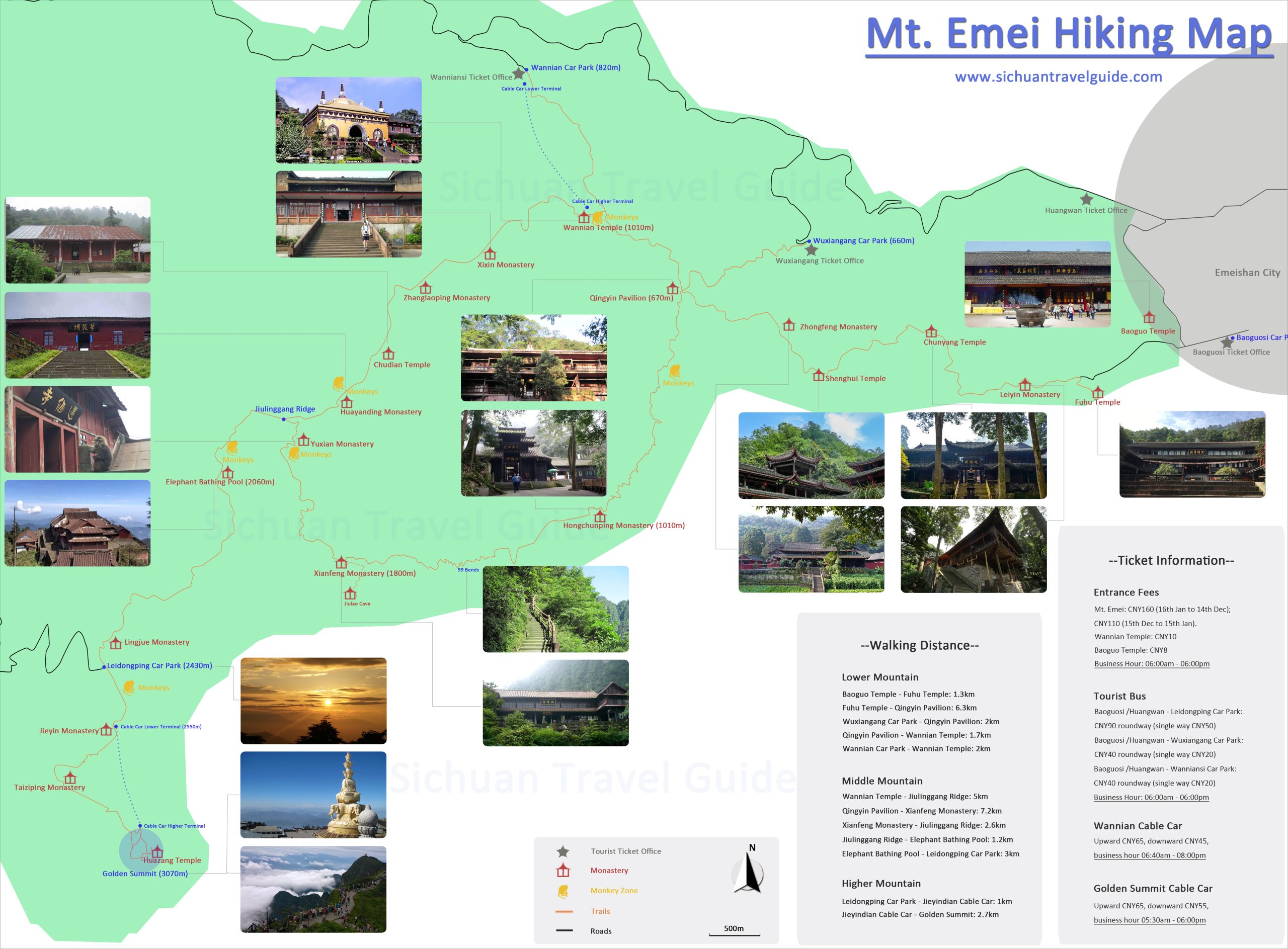
Mount Emei
II. Introduction to the Scenic Spots of Mount Emei

Wanfo Summit
Wanfo Summit is the scenic area and natural ecological reserve with the highest altitude among the four famous Buddhist mountains in China. It is also the world natural and cultural heritage site with the highest altitude in China. Wanfo Summit is 3099 meters above sea level. There was originally a temple on the top called Wenshu Nunnery, also known as Qingliang Nunnery and Jile Hall. It was built in the Zhengde period of the Ming Dynasty and rebuilt in the 11th year of the Guangxu period of the Qing Dynasty. A sutra collection building was built and thousands of volumes of scriptures were collected. Wanfo Summit, Qianfo Summit, and Golden Summit are arranged in a row. Looking up from the foot of the mountain, they look like a cicada’s head. The saying “cicada’s head, Emei Mountain” comes from this.

Golden Summit
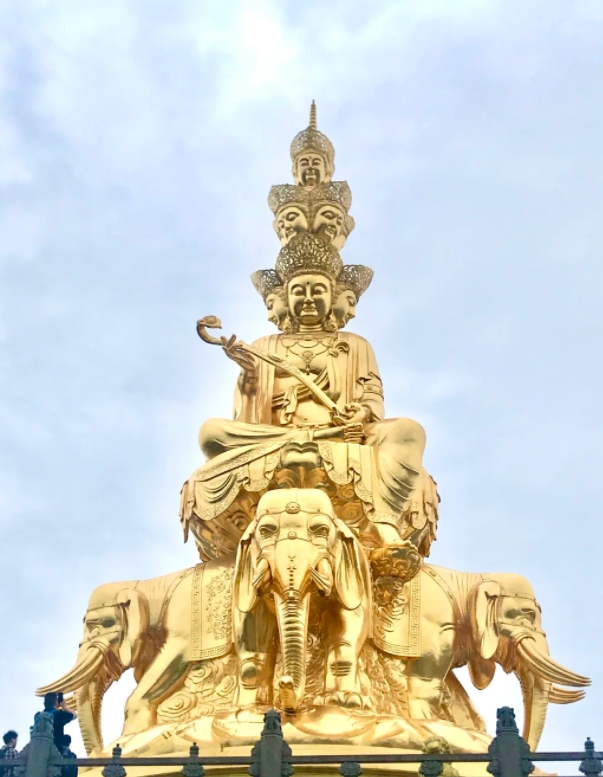
Golden Buddha
The Golden Buddha on the Golden Summit is a copper-cast and gold-plated Buddha statue. The total height is 48 meters and the total weight is 660 tons. It is composed of a pedestal and the Samantabhadra Bodhisattva in ten directions. Among them, the pedestal is 6 meters high, 27 meters long and wide on each side. Ten great vows of Samantabhadra are engraved on all sides. The exterior is decorated with granite reliefs. The Samantabhadra Bodhisattva in ten directions is 42 meters high and weighs 350 tons. It comes from “forty-eight vows to save all sentient beings” in Buddhist scriptures, which means the forty-eight great vows of Amitabha Buddha to save all sentient beings.
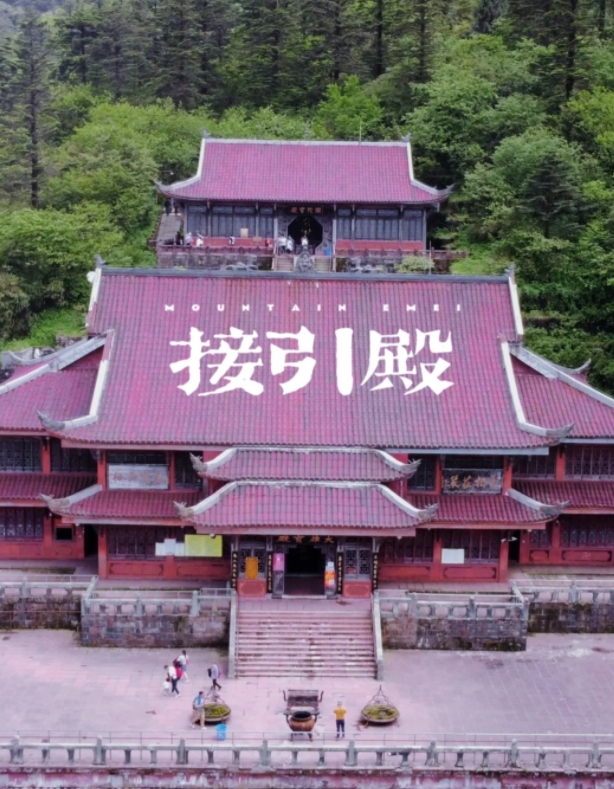
Jieyin Hall
Jieyin Hall was formerly known as Xindian in the Song Dynasty. It is located at the foot of the big mountain at an altitude of 2540 meters. In the early Ming Dynasty, it was rebuilt into Jieyin Nunnery, also known as Chaoyang Pavilion. There are eight ancient scenic spots such as “Combing hair and leaving the moon”, “Immortal bed lying on clouds”, “Watching the light from the platform”, and “Evening glow of the divine lamp”. The architectural layout of Jieyin Hall faces west from the east. It is a courtyard layout with three halls, consisting of the front hall (Maitreya Hall), the middle hall (Mahavira Hall), and the back hall (Amitabha Hall). The main body of the building is an all-frame cement brick antique structure, with a Xieshan-style roof, glazed tile roof, plain brick platform base, and multiple steps of Ruyi treads. It is located on a three-level platform with a height difference of 25 meters before and after.
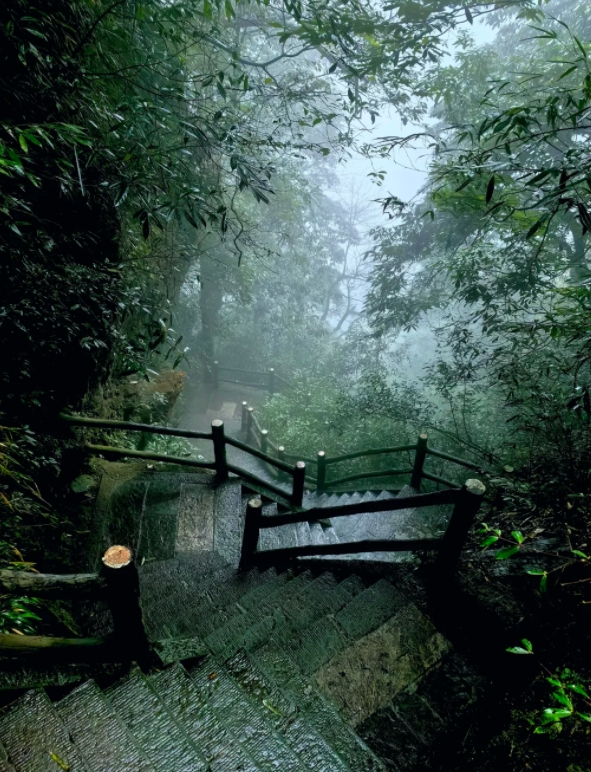
Ninety-Nine Turns
The Ninety-Nine Turns is a famous dangerous slope on Mount Emei. It starts from Lingxiao Pavilion and ends at Shouxing Bridge. One turn follows another, one slope connects another. When looking at one slope to the end, suddenly the path winds around and there is another slope. Legend has it that when Samantabhadra came to Mount Emei to build a Buddhist site at the beginning, when passing by here, seeing the high and steep mountains, steep slopes and slippery stones, and extremely dangerous terrain, he instructed Lingzu Bodhisattva to command three thousand powerful men accompanying him to start working at the same time, and each person built a step. Three thousand stone steps were completed in an instant. When Lingzu checked and counted, there were exactly ninety-nine turns on the stone steps. Therefore, this slope got its name.
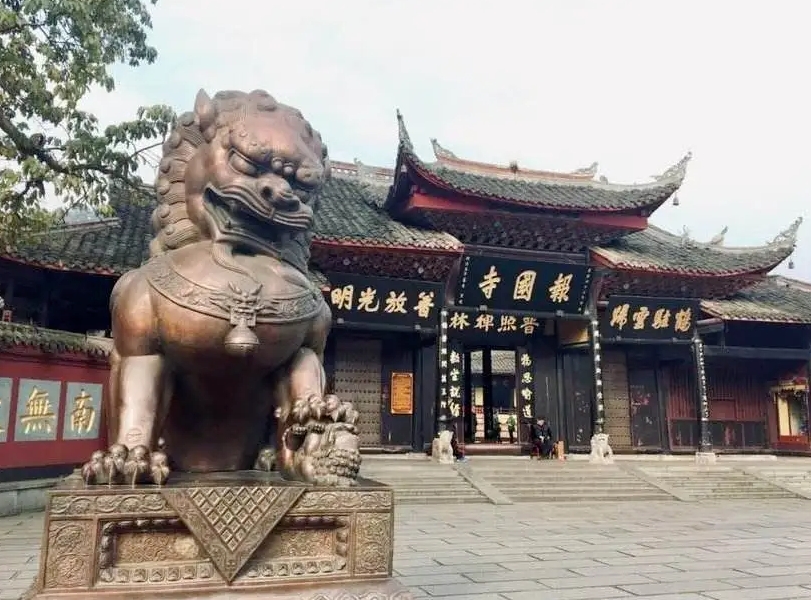
Baoguo Temple
Baoguo Temple is located at the foot of Mount Emei, at an altitude of 551 meters. It is the first temple on Mount Emei. It is also the location of the Mount Emei Buddhist Association and the center of Buddhist activities on Mount Emei. The large plaque “Baoguo Temple” on the mountain gate is inscribed by Emperor Kangxi of the Qing Dynasty and written by Yu Fan. There is a plaque “Solemn Appearance” hanging in the main hall. On the pillars on both sides of the mountain gate are the couplets “The phoenix spreads its wings towards the golden palace, and the bells and chimes are frequently heard falling on the jade steps.” The horizontal plaque is “Illuminating the Buddhist Forest” and “Emitting Brilliant Light”. There is a couplet on the gate: “Contemplate the Dao alone, and expound the scriptures while sitting.”
III. Mountaineering Strategy
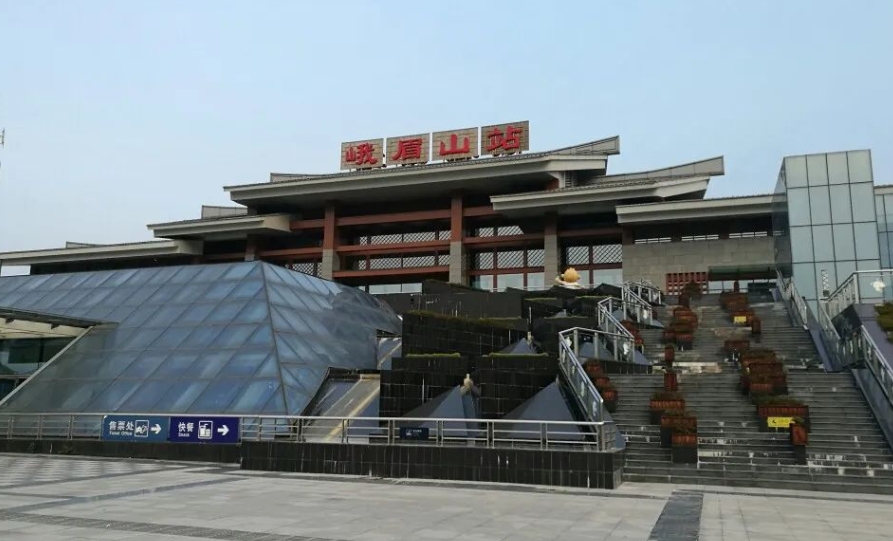
Emeishan Railway Station
Emei Railway Station. Emei Railway Station is about 9 kilometers away from the tourist center of Mount Emei Scenic Area. Passengers can take Bus No. 601 and get off at Baoguo Temple Tourist Station. It takes about one hour. Or take a taxi to the Mount Emei Tourist Transport Center or Huangwan Tourist Center.
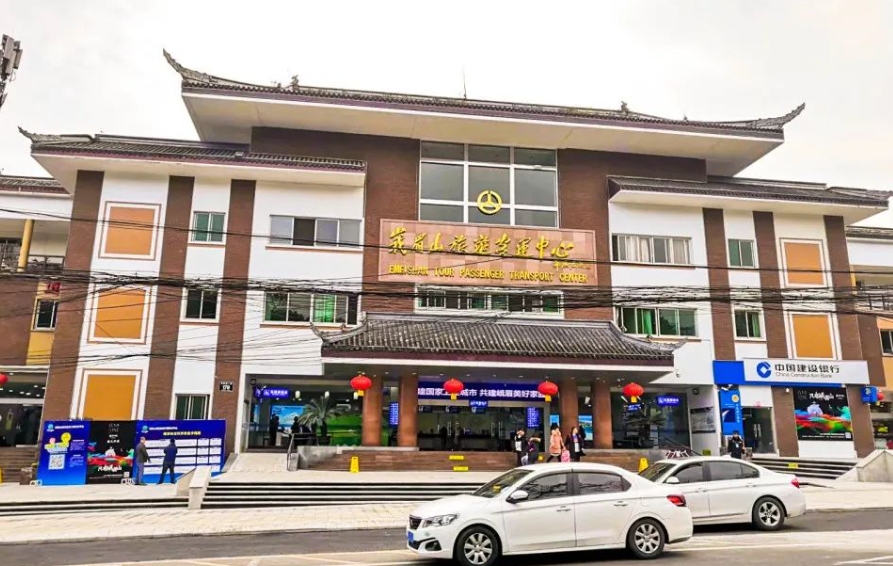
Mount Emei Tourist Transport Center
②Bus: Mount Emei Tourist Transport Center, Mount Emei Jiuzhu Passenger Transport Center. Generally, tourists within the province who cannot take a train can consider taking a bus. Priority is given to choosing to go to the Mount Emei Tourist Transport Center station, which is right next to the scenic area. Secondly, the slightly farther Mount Emei Jiuzhu Passenger Transport Center. From Jiuzhu Passenger Transport Center, you can take Bus No. 602 to Mount Emei Scenic Area.
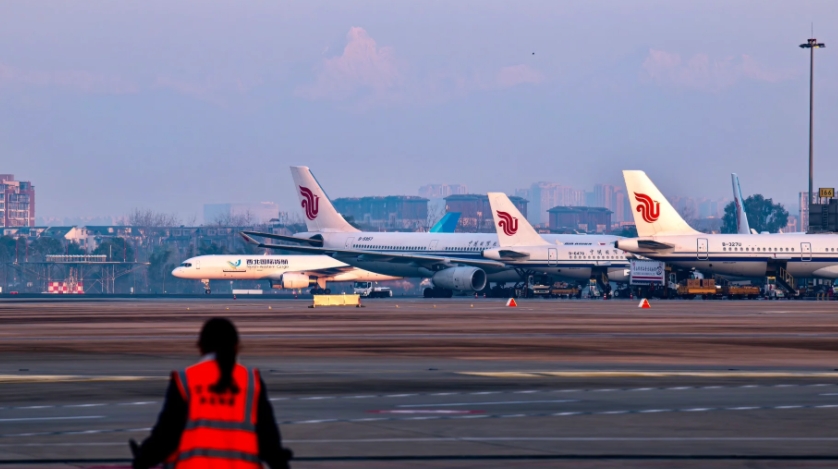
Chengdu Shuangliu International Airport
③Airplane: Chengdu Shuangliu International Airport. After arriving at Chengdu Shuangliu Airport from other places, take the intercity high-speed rail at Terminal 2 of Chengdu Shuangliu Airport to reach Emeishan Railway Station. The whole journey takes about 1 hour and 20 minutes. The second-class seat ticket is 68 yuan. After arriving at Emeishan Railway Station, take a bus or shuttle bus to Mount Emei Scenic Area.
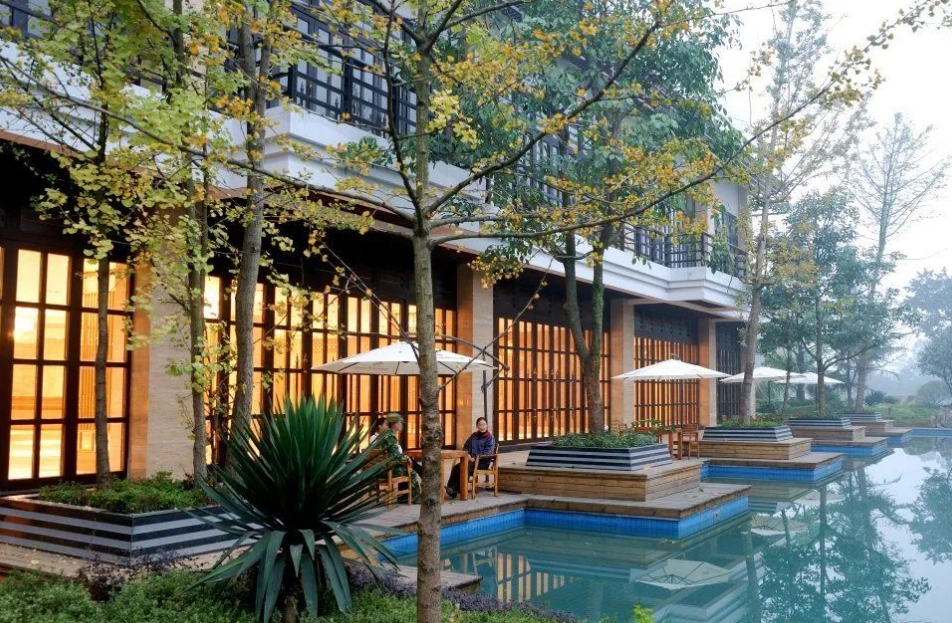
Tianyi Hot Spring Hotel
Accommodation in middle-altitude area: In the middle-altitude area, there are temples such as Qingyin Pavilion, Wannian Temple, Guangfu Temple, etc. Nearby, there are hotels, homestays, etc. to meet the consumption needs of different levels. The more famous ones are Mount Emei Wanjinglou Hotel, Jinghu Mountain Villa, and Mount Emei Ecological Park Hotel. The prices are between 200 and 600 yuan. Qingyin Pavilion has meditation rooms for accommodation, ranging from single rooms to multi-person rooms. The prices are moderate. This place is far from the top of the mountain. If you want to see the sunrise, don’t stay in this area. In addition, there are also many hotels near Zero Kilometer. However, it is also very far from the top of the mountain. Self-driving tourists can consider staying at Zero Kilometer and taking a bus up the mountain the next day.
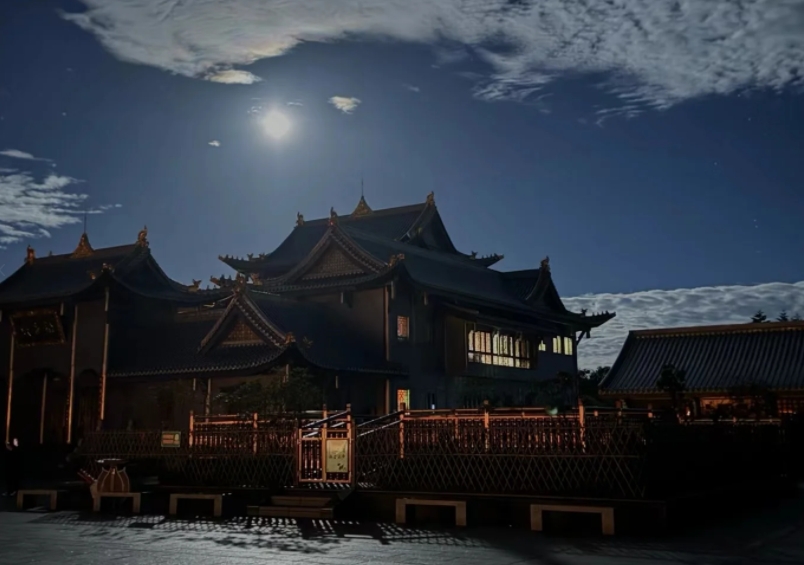
Jinding Health Hotel
(3) Mountaineering Routes

Mount Emei Four Entrance Climbing Route Map
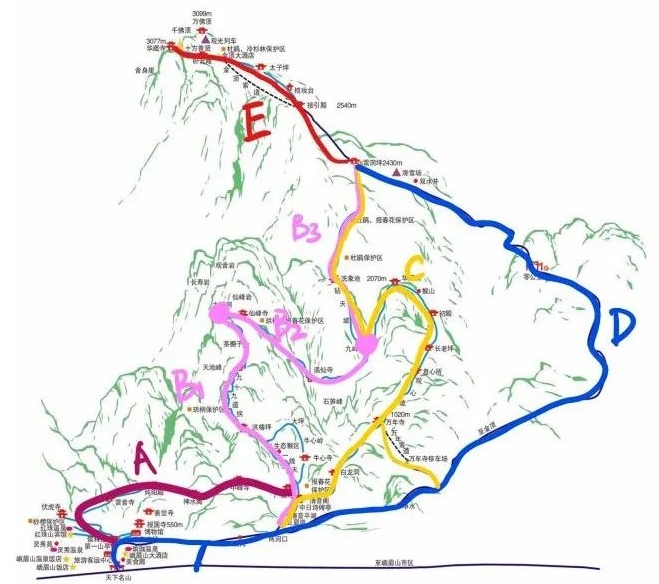
Wuxian’gang entrance
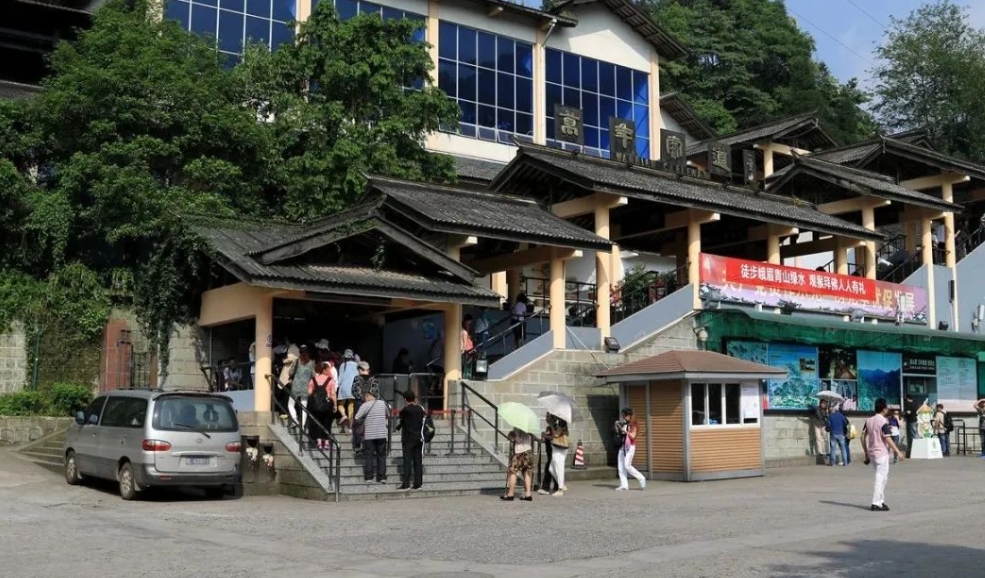
Wannian Temple entrance
Zero Kilometer entrance: If climbing from this entrance, directly take the scenic area shuttle bus from Baoguo Temple (round-trip ticket from Emeishan Railway Station/Baoguo Temple/Huangwan to Leidongping: 90 yuan per adult) and it is estimated to reach Leidongping, which takes about 2 hours. Later, walk from Leidongping to Jieyin Hall, and then take the Golden Summit cableway (65 yuan, about 10 minutes) or walk (a total of about 6 kilometers, taking about 2 hours) to reach the Golden Summit. In addition, if you are driving by yourself, you can directly drive to the Zero Kilometer entrance. Moreover, the food and accommodation at the Zero Kilometer entrance are relatively complete. You can also take the scenic area shuttle bus (round-trip ticket from Zero Kilometer to Leidongping: 50 yuan per adult) from here to reach Leidongping.
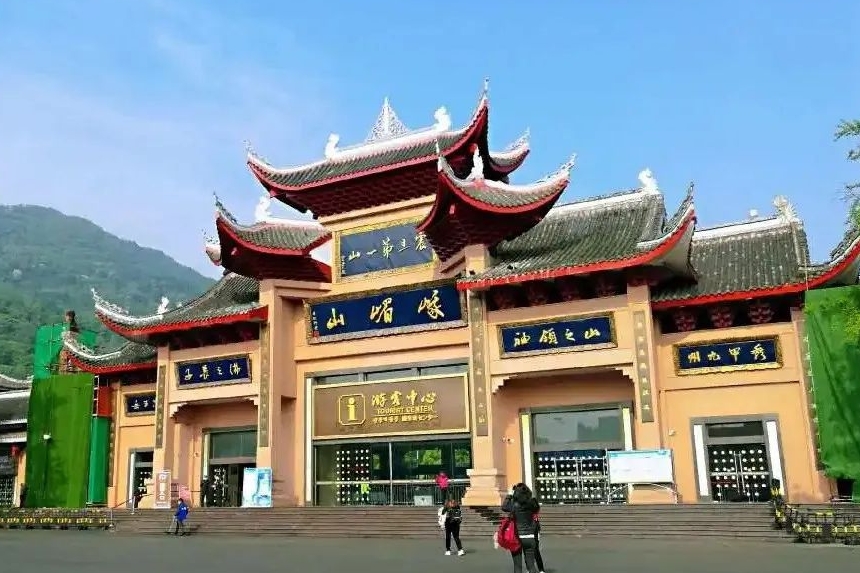
Zero Kilometer entrance
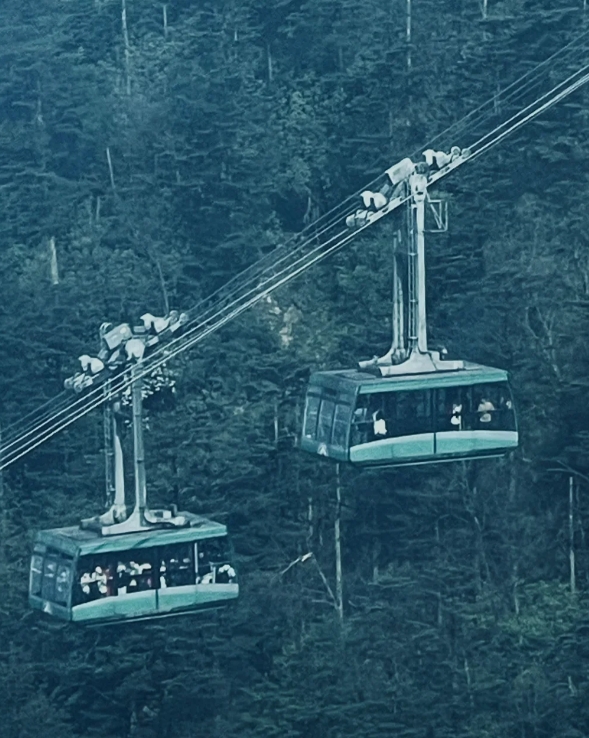
cableway
III. Other Precautions
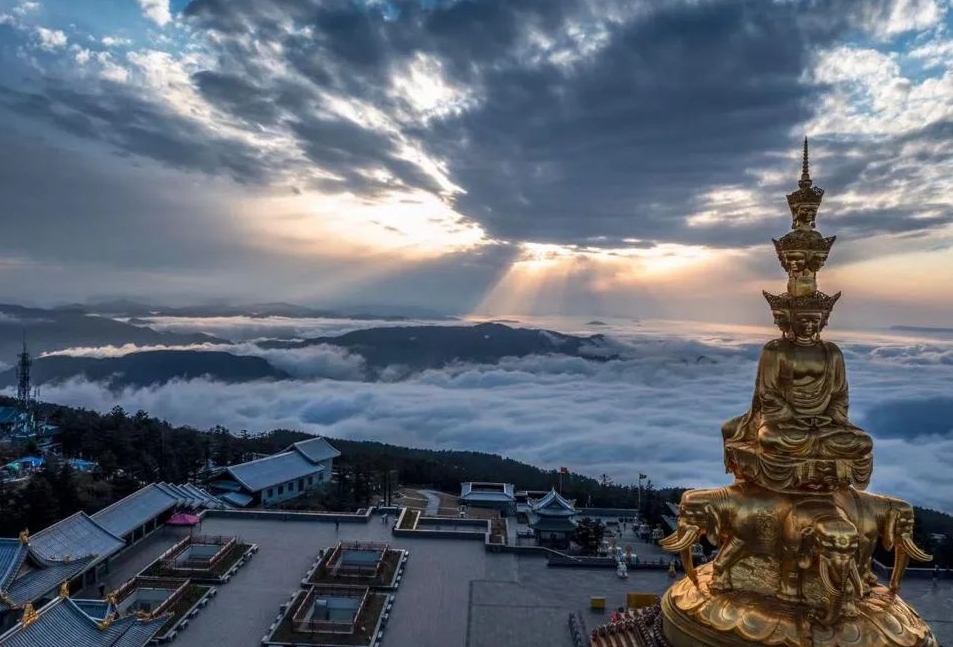
Golden Buddha on the Golden Summit

Monkeys on Mount Emei
Operating hours of sightseeing buses:

